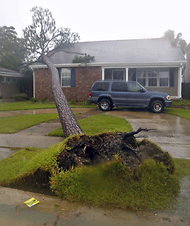An article in Wednesday’s paper detailed the woes of New York City renters whose apartments are uninhabitable because of Hurricane Sandy. Some renters, the article said, were wondering if they should break their leases and find another place to live.
But tenants who have bought renter’s insurance may have other options if they want to stay in their current location.
Loretta Worters of the Insurance Information Institute says the “additional living expense” provision of renter’s insurance, also known as “loss of use” coverage, may come into play if you’re unable to live in your apartment due to a covered event like a hurricane.
In that case, she said, most policies will reimburse additional living expenses, but they may set limits on the amount they will pay. Covered expenses include hotel bills, temporary rentals, restaurant meals and other costs you have to pay while the apartment is being repaired or rebuilt.
“Typically, if you live in a certain size and type of apartment, you will get something” for a comparable dwelling, she wrote.
There are caveats, of course. “Each case is different, each policy is different,” she said.
If there’s flooding, for instance, you probably won’t be reimbursed because most standard renter’s policies don’t cover flooding. There are exceptions, she said, but “most don’t.” You can buy flood insurance from the federal National Flood Insurance Program, but that program doesn’t cover additional living expense, she said.
If you have no heat, or no electricity, you may be covered for your additional expenses, but it depends on the specific language in your policy. Sometimes, she said, the policy will provide coverage if you have only structural damage, but it depends on the situation.
Further, the amount of coverage provided for additional living expenses depends on the specific policy language, she said. There are often dollar limits — in some cases, 20 percent or more of your policy’s liability limit. A standard liability limit on a rental policy is $100,000, so that would mean benefits of at least $20,000. Some people buy much higher liability limits, so the coverage for additional living expenses would be higher.
Insurers may also place time limits on coverage for living expenses, usually, one to two years.
She advises checking with your insurance company about the alternative arrangements you plan to make, to make sure they’re reasonable and will be covered.
What if your landlord is waiving your rent while the apartment is unlivable? Ms. Worters said any arrangement with your landlord probably wouldn’t affect your coverage for additional living expenses because the insurance company wouldn’t know that your rent was waived. “The honesty factor comes into play here,” she said.
Are you seeking additional living expenses under a renter’s policy? Do you expect your claim to be covered?
Article source: http://bucks.blogs.nytimes.com/2012/11/07/before-breaking-a-lease-check-your-renters-policy/?partner=rss&emc=rss
